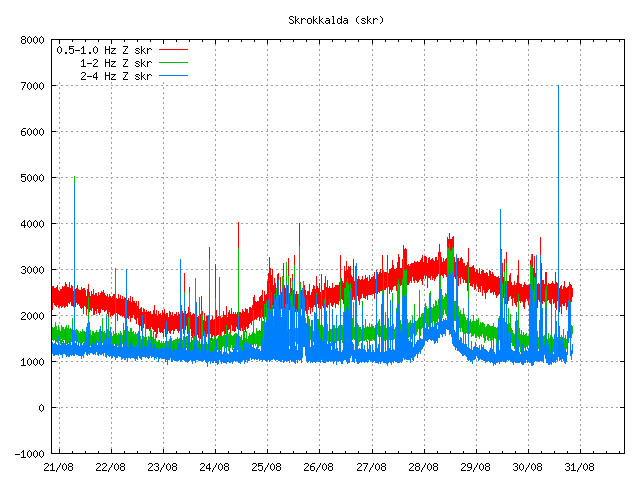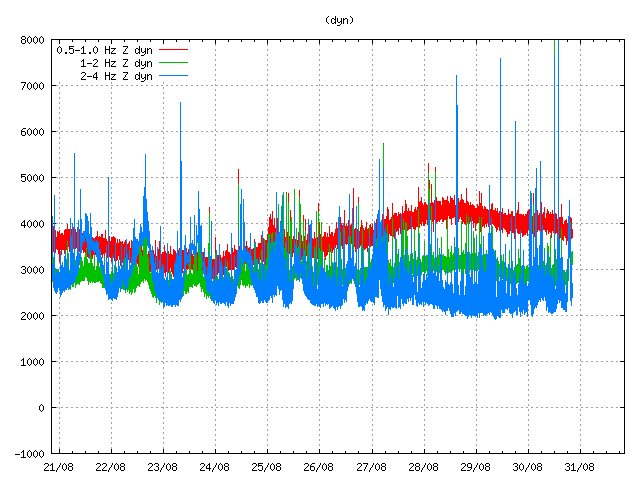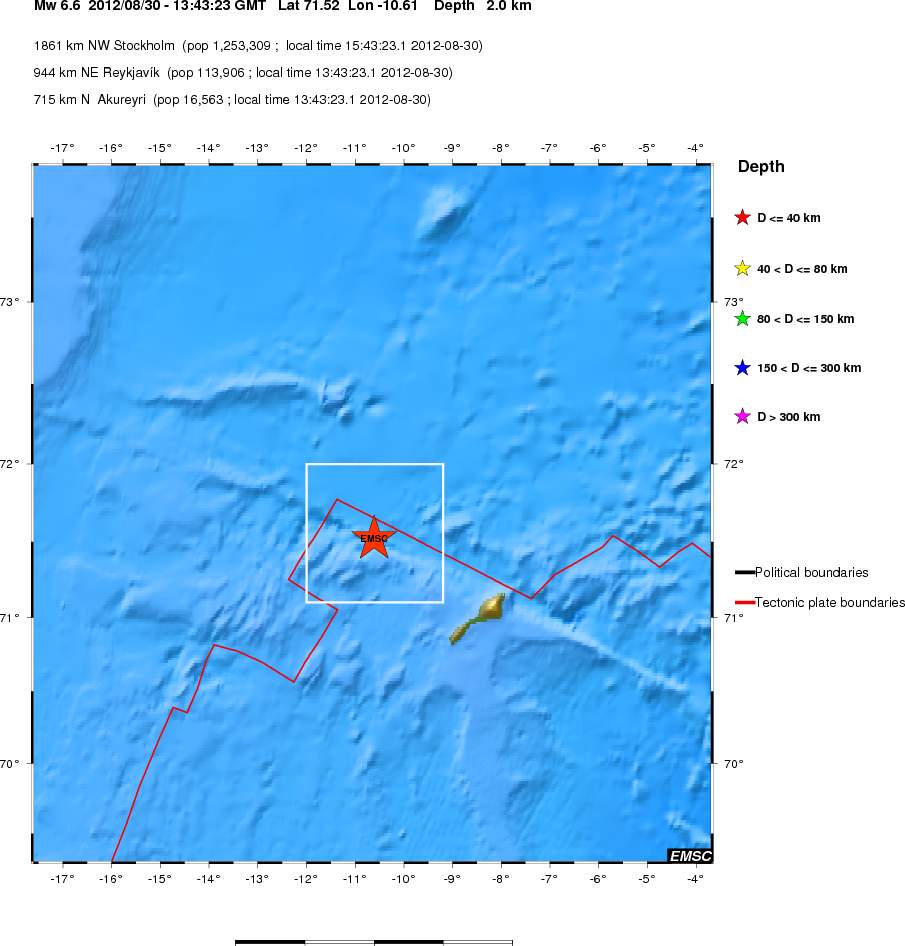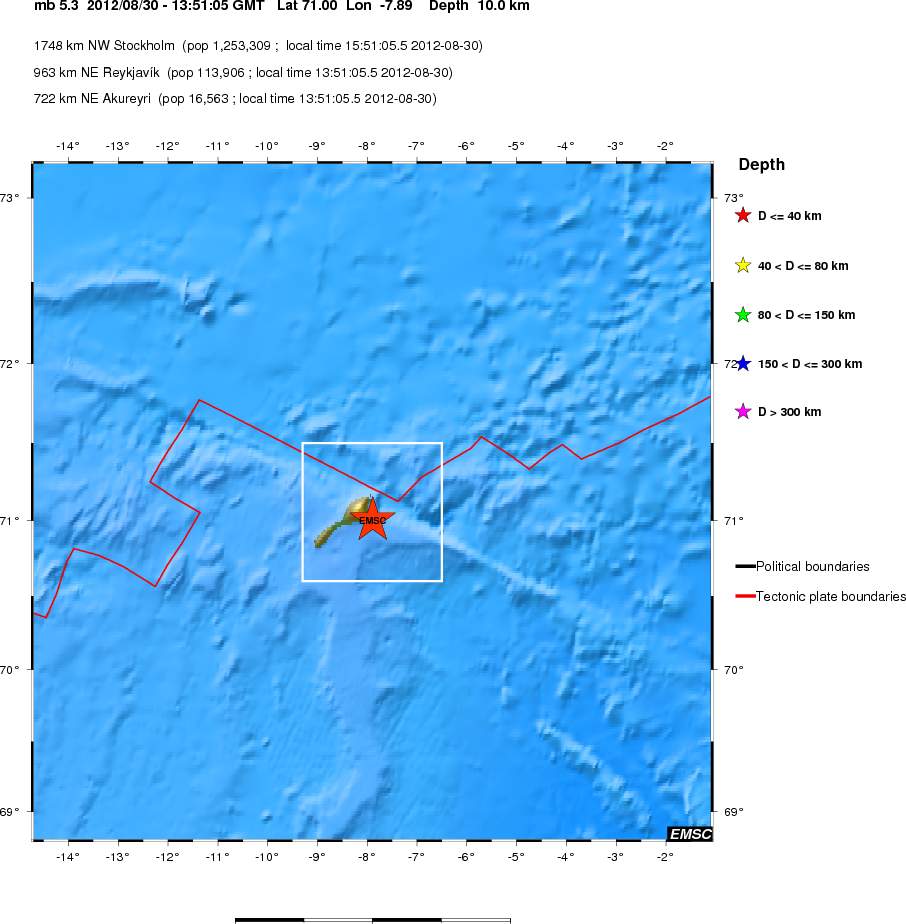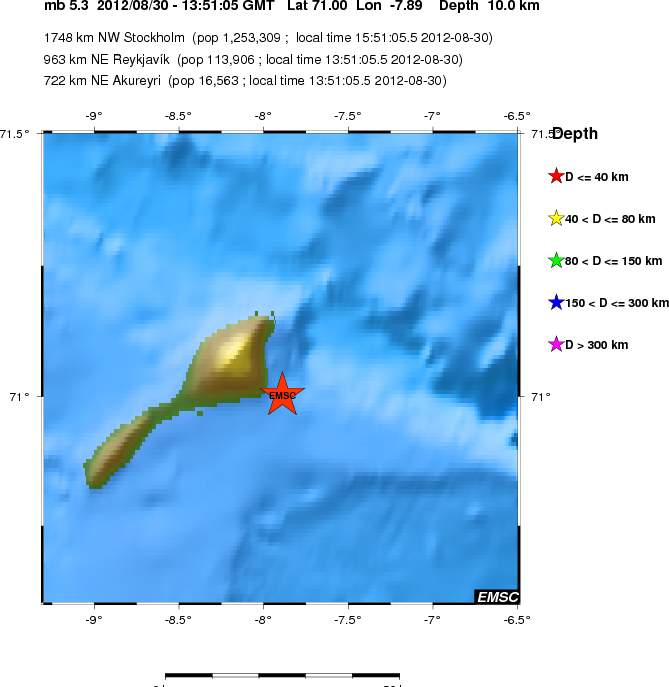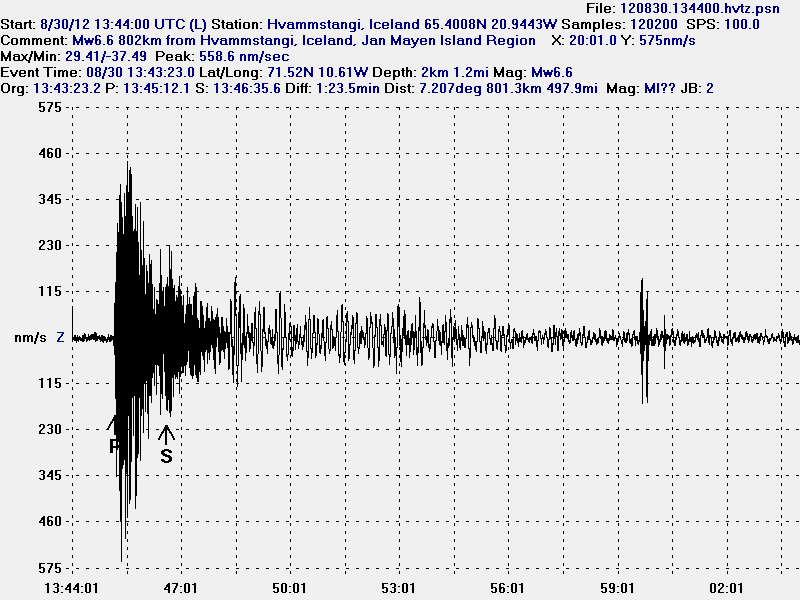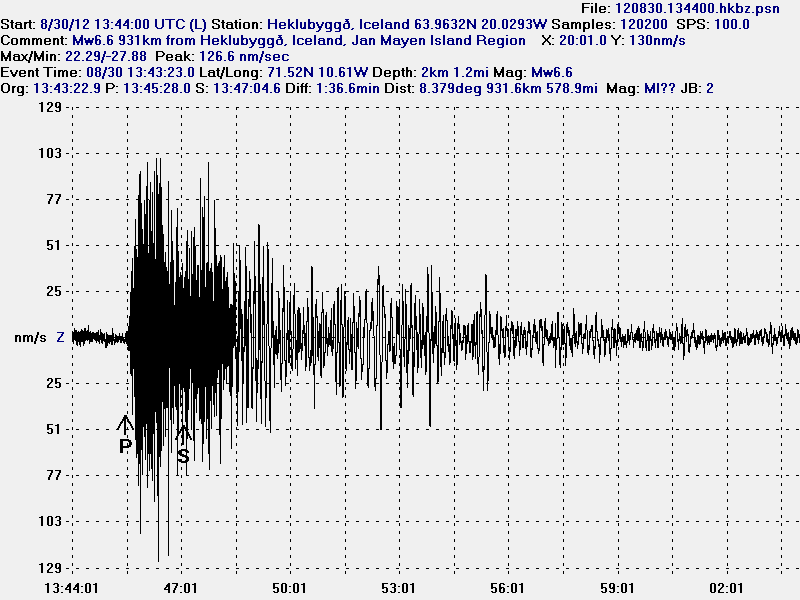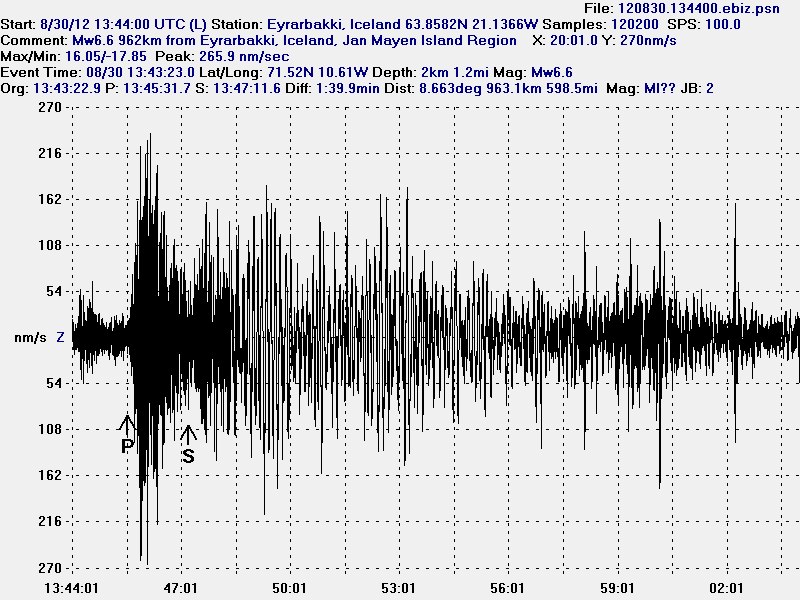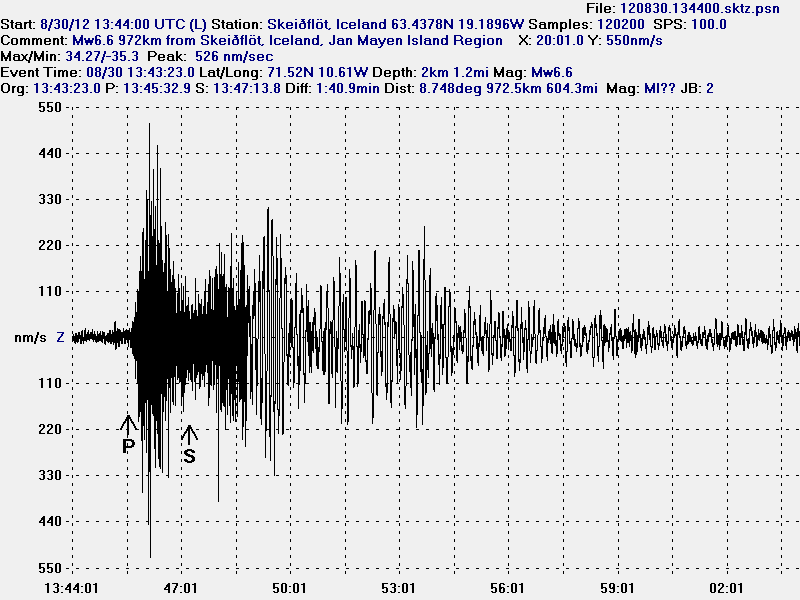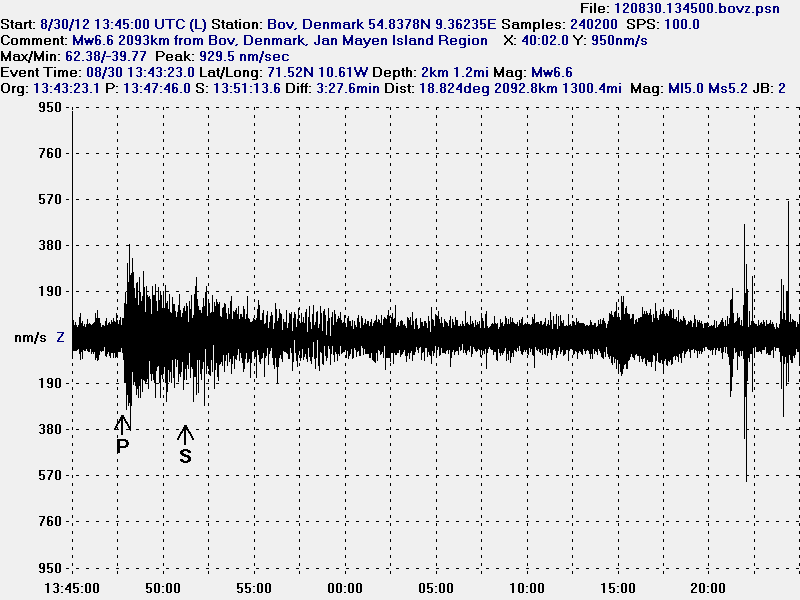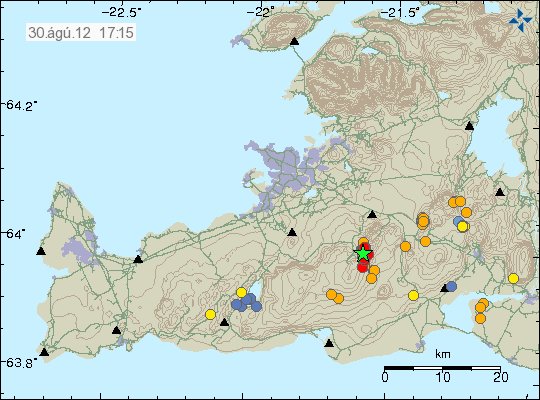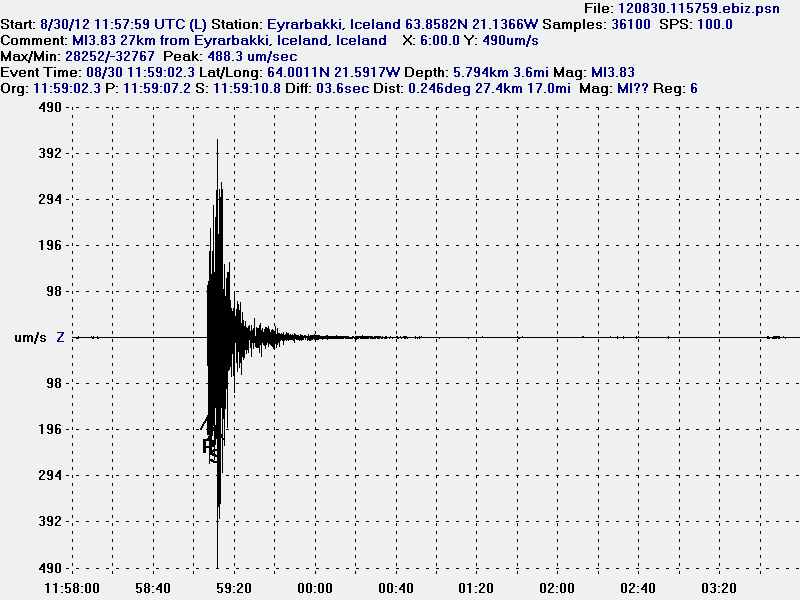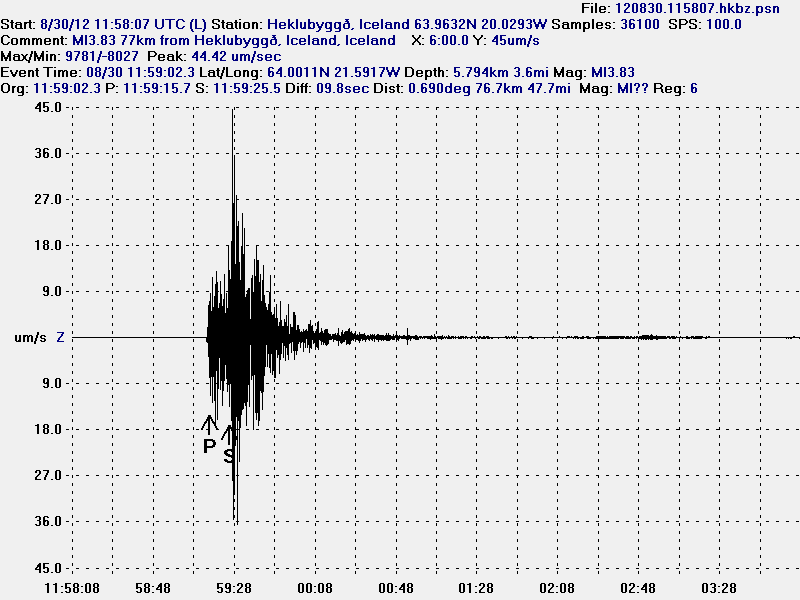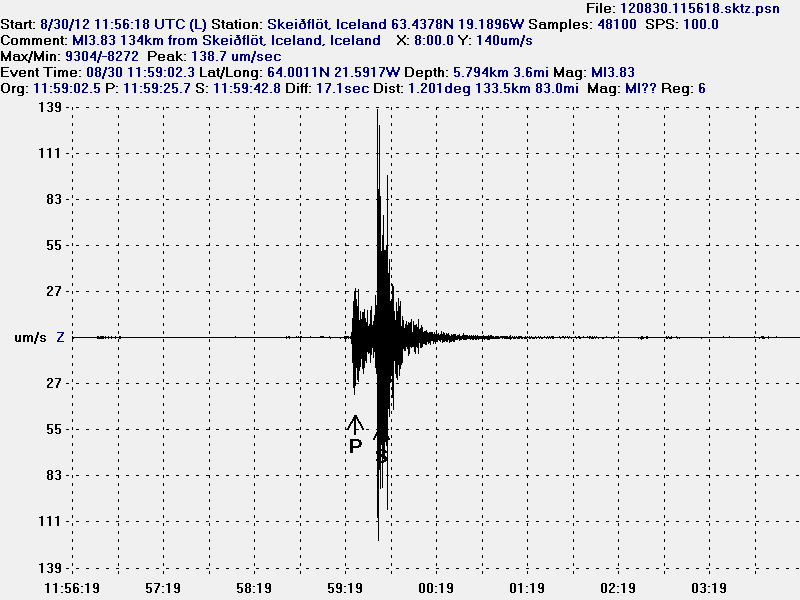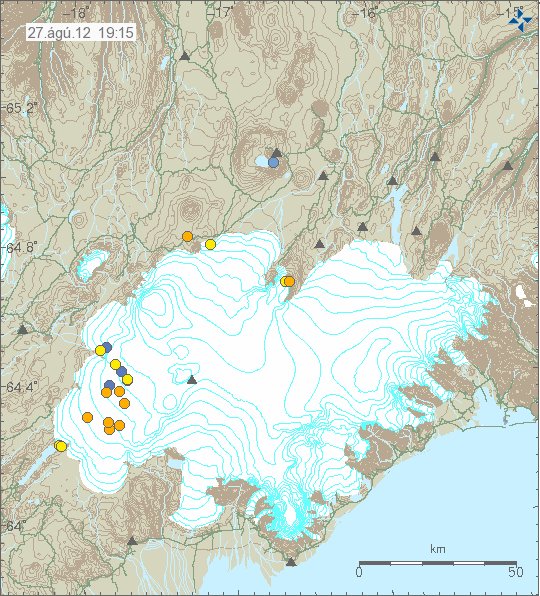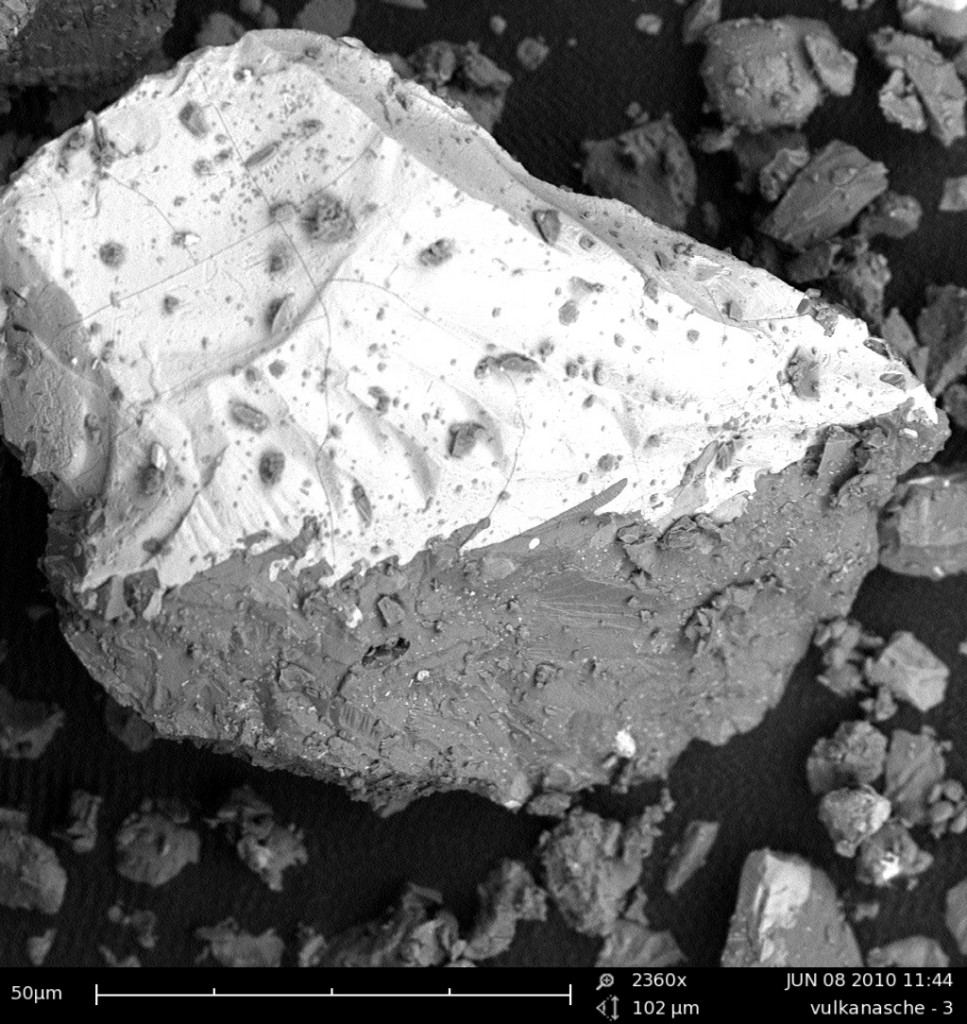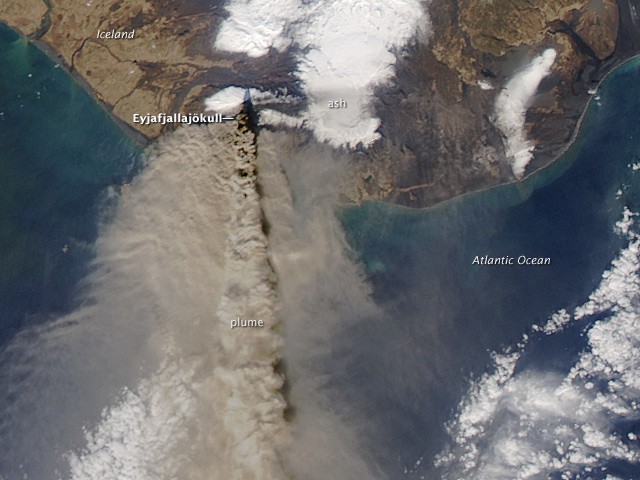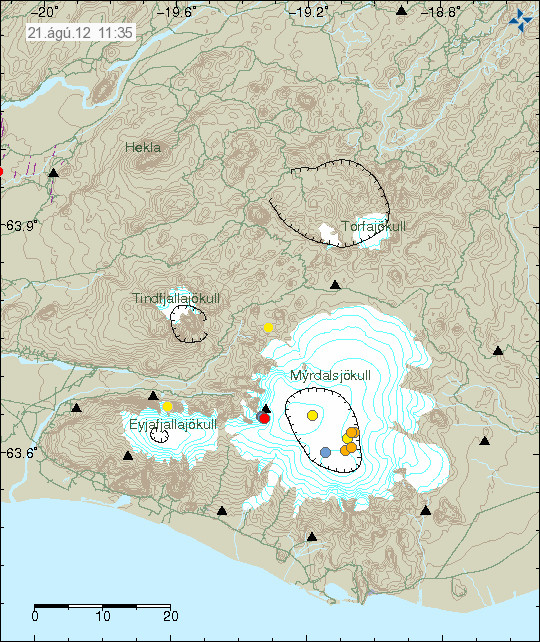Yesterday an glacier flood started form west Skaftárketill cauldron. But that is an hydro-thermal area inside Hamarinn volcano (Bárðarbunga volcano system). The glacier flood is expected to be small. Last year in July there was also an glacier flood from this area of Vatnajökull glacier. But that was due to minor eruption in this area (it was poorly documented by scientists. I do not know why that is). But now it is melt-water from hydro-thermal area that is causing this glacier flood.
But glacier floods like this happen every 1 to 3 years from this area. Following this glacier flood an swarm of glacier-quakes have been detected in this part of Vatnajökull glacier. Flood in western Skaftárkatli might trigger a glacier flood in the eastern skaftárkatli cauldron. But it is not known if that is actually going to happen this time. It is not expected that current glacier flood is going to be a large one. But there is an risk of Hydrogen sulfide poisoning if people are close the glacier river during the glacier flood. So it is not recommend to go close to the glacier river due to this risk. The glacier flood is expected to appear from under Vatnajökull glacier in the next 5 to 6 hours. It is expected to last around 2 to 3 days at most.
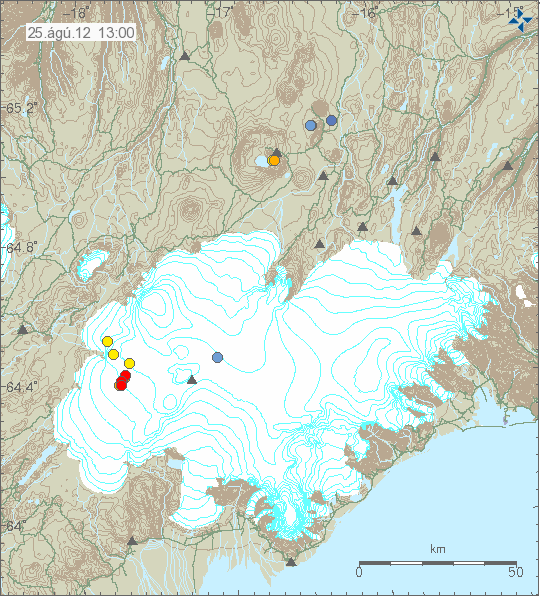
Glacier quakes in Vatnajökull glacier following this glacier flood. This glacier quakes are not strong and do not show up on automatic SIL system. Copyright of this picture belongs to Icelandic Meteorological Office.
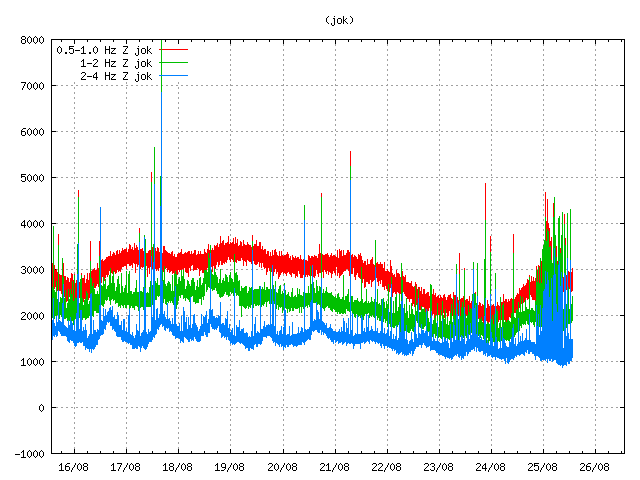
Glacier quake activity as it appears on SIL seismometers around Vatnajökull glacier. Copyright of this picture belongs to Icelandic Meteorological Office.

Glacier quake activity as it appears on SIL seismometers around Vatnajökull glacier. Copyright of this picture belongs to Icelandic Meteorological Office.
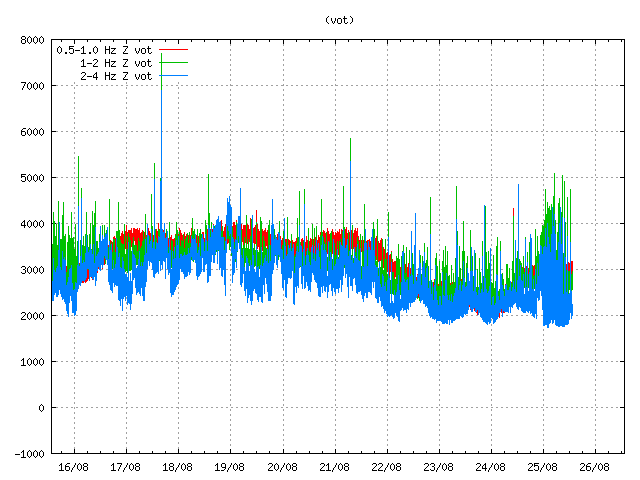
Glacier quake activity as it appears on SIL seismometers around Vatnajökull glacier. Copyright of this picture belongs to Icelandic Meteorological Office.
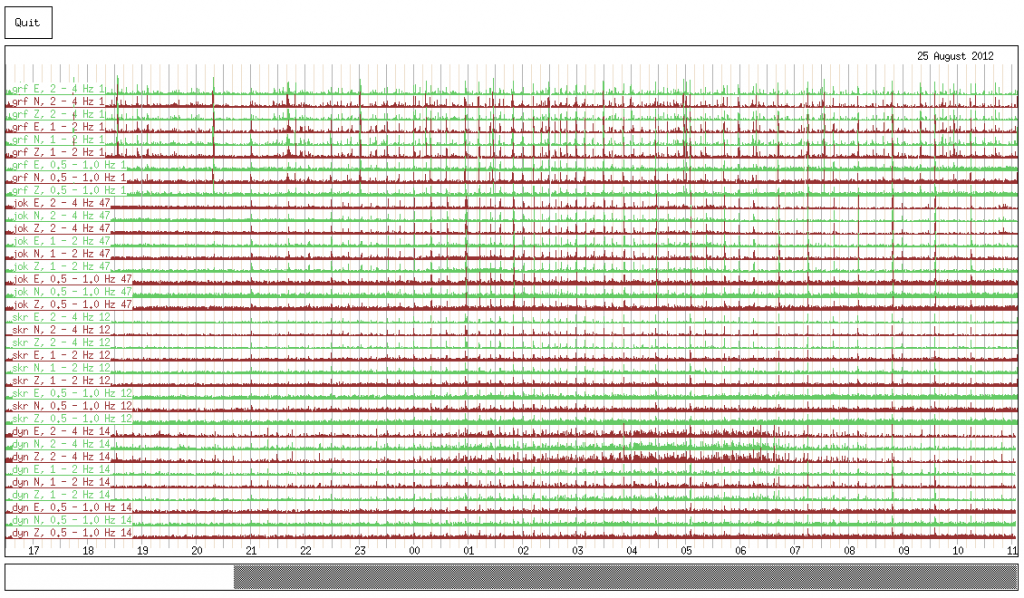
Click on this image for full size. This plot here shows output from several SIL stations. This image was released by Icelandic Meteorological Office today. Copyright of this picture belongs to Icelandic Meteorological Office.
It is believed that sometimes following this type of glacier floods from this area in Vatnajökull glacier there are small eruptions, or steam events as the pressure on the hydro-thermal system drops . That in turns allows for some magma movement that is powering the hydro-thermal system in this area of Vatnajökull glacier. It is impossible to know for sure if that is going to happen now. But it is good idea to keep an eye-out for such events taking place in Hamarinn volcano. Given the minor eruption that took place there last year.
Here is an comparison of the events that took place last year compared to the events that are currently taking place in Hamarinn volcano.
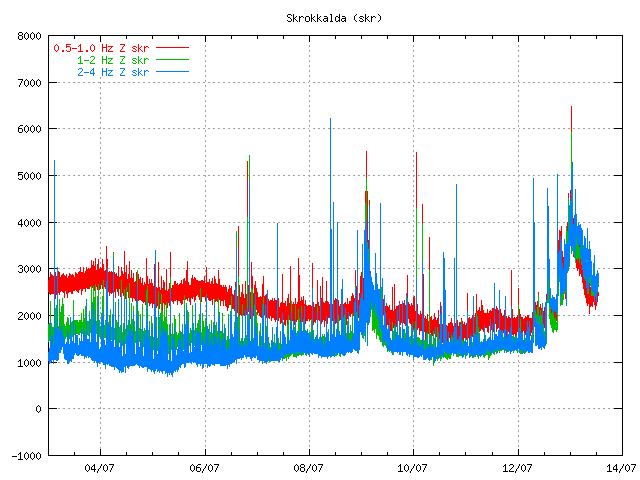
Harmonic tremor subsiding from Hamarinn volcano on 13. July 2011. The following glacier flood appears clearly on this tremor plot from Icelandic Meteorological Office. Copyright of this picture belongs to Icelandic Meteorological Office.
I was seeing activity to November 2011 after the activity in July 2011.
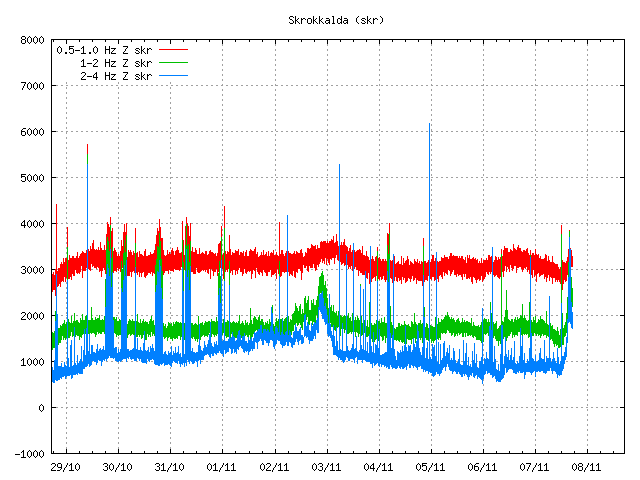
One of the last harmonic tremor activity that I did see in Hamarinn volcano during the year 2011. But this took place on 7. November 2011. After this point it did go quiet. Copyright of this picture belongs to Icelandic Meteorological Office.
I do not expect any volcano eruption in Hamarinn volcano at this point. But such things are impossible to know for sure. As Hamarinn volcano has not been studied in details until after the year 2011 eruption.
Icelandic news about this glacier flood
Hlaup hafið í Skaftá (Rúv.is)
Verður væntanlega ekki mikið hlaup (Rúv.is)
Hlaup að hefjast í Skaftá (Vísir.is)
Aldrei verið jafnfljótir að sjá hlaupið (Vísir.is)
Skaftárhlaup hafið (mbl.is)


